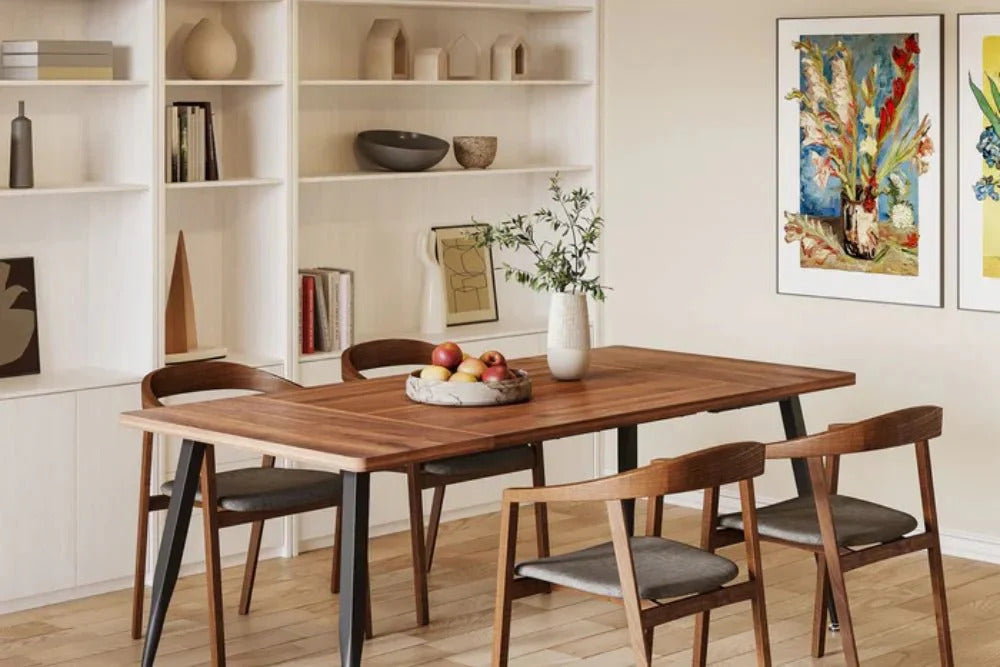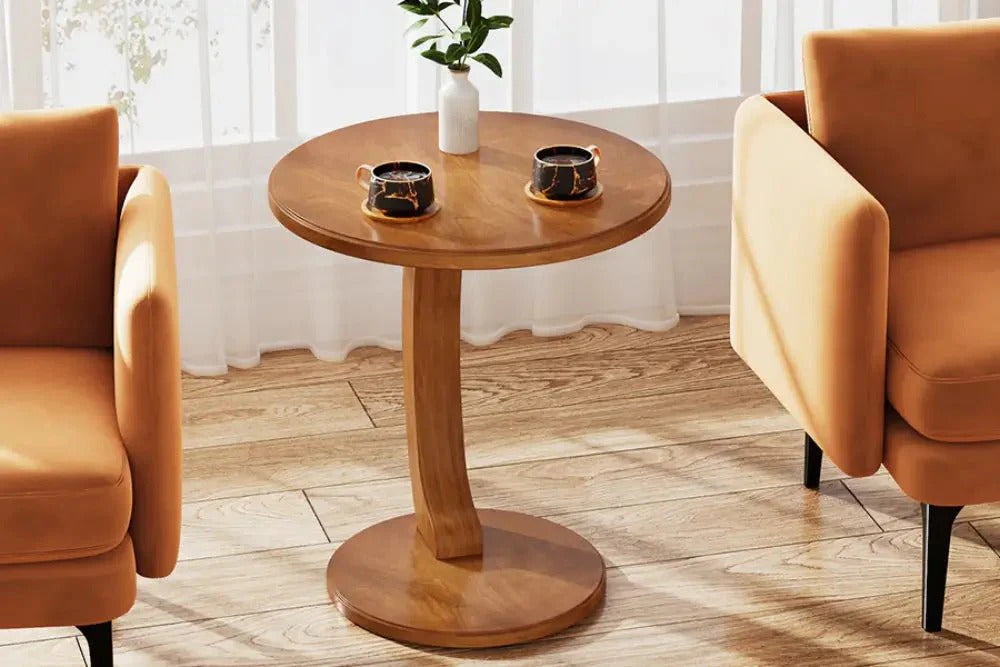Today’s Australian furniture market offers everything from solid walnut to tempered glass side tables, along with plenty of budget-friendly options made from MDF or laminate. According to retailers in the premium furniture space, Aussies are increasingly prioritising durability, aesthetics and sustainability — not just price. That’s why understanding the pros and cons of each material is essential before making a purchase.
This guide breaks down the most common side table materials, their strengths and weaknesses, and which ones might work best for different homes and lifestyles across Australia.
The Role of Side Tables in the Home
Side tables may look like small pieces of furniture, but in most Australian homes, they play a surprisingly important role. On a daily basis, they sit beside sofas, recliners or beds — holding a lamp for evening reading, a morning coffee, or the inevitable stack of remotes and books.
Because they’re lightweight and easy to move, side tables often shift around the home depending on the occasion — pulled closer for movie night, placed near guests, or used to create a cosy reading corner.
Australia’s varied climate also affects how well different materials perform over time. For example:
- Dry, heated homes in winter (especially in VIC, NSW or ACT) can cause natural wood to lose moisture more quickly.
- Coastal homes in QLD or WA often deal with higher humidity, which can impact timber movement or rattan durability.
- Direct sunlight from large north-facing windows may fade finishes or cause veneered surfaces to weaken.
- In semi-outdoor spaces like sunrooms or covered patios, temperature swings and moisture resistance become essential.
That’s why material choice matters. When selecting a side table, consider five factors: durability, weight and stability, ease of maintenance, how well it suits your interior style, and whether you want a long-term piece or something more temporary and budget-friendly.
Common Side Table Materials Compared
1. Solid Wood (Hardwoods & Softwoods)
Solid wood remains a favourite in Australian homes. Hardwoods such as oak, walnut and ash are prized for their durability and beautiful grain.
Pros: Strong, repairable, ages beautifully, warm and natural.
Cons: Sensitive to moisture and temperature changes, heavier, generally pricier.
Best For: Traditional, mid-century or rustic interiors where character matters.

2. Engineered Wood (MDF, Plywood, Veneers)
Many side tables from retailers like IKEA, Amart or Fantastic Furniture use MDF or plywood combined with veneer or laminate.
Pros: Affordable, stable across different climates, wide range of finishes.
Cons: Harder to repair, veneer may chip or peel over time, lacks heirloom appeal.

3. Metal
Metal is commonly used for frames or legs. Steel and aluminium provide strength while keeping the silhouette sleek. Brass is often used as an accent to add warmth or luxury.
Pros: Strong, stable, allows slim designs, pairs well with wood, stone or glass.
Cons: Can scratch, may rust if exposed to moisture, feels cooler to the touch.
Best For: Modern, minimalist or industrial interiors.

4. Glass (Tempered or Acrylic)
Glass is usually used for the tabletop, supported by wooden or metal frames. Tempered glass is the safest and most durable option, while acrylic offers a similar transparent look at a lighter weight.
Pros: Visually light, makes small spaces appear larger, water-resistant, easy to clean.
Cons: Shows fingerprints, may chip or scratch, not ideal for heavy loads.
Best For: Contemporary or small-space living.
5. Stone (Marble, Quartz, Concrete)
Stone is a favourite in premium Australian designer furniture. A stone slab paired with timber or metal legs creates an eye-catching focal point.
Pros: Luxurious, heat-resistant, long-lasting.
Cons: Heavy, expensive, can stain if unsealed, harder to move.
Best For: High-impact, permanent statement pieces.

6. Wicker, Rattan & Bamboo
The breezy, natural look of rattan and wicker fits beautifully in coastal or relaxed Australian interiors. However, humidity or strong sun exposure can affect longevity.
Tribesigns end tables address these issues by combining authentic rattan weaving with solid wood frames — offering style plus durability.
Pros: Lightweight, organic texture, eco-friendly feel.
Cons: Limited weight capacity, may fray or fade.
Best For: Casual living rooms, sunrooms or coastal homes.

7. Mixed Materials
Combining multiple materials — such as timber with metal or marble with steel — offers both durability and design interest. This trend is increasingly popular in urban Australian homes.
Pros: Visually dynamic, versatile, blends strength with style.
Cons: More complex construction, potential weak points at joints.
Best For: Modern and eclectic interiors.
How to Choose With Confidence
Step 1: Assess Your Space & Habits
Think about where the side table will sit and how you’ll use it.
- High-traffic areas need durable materials like metal or hardwood.
- For decorative use, glass or stone works beautifully.
- Homes with kids or pets may prefer engineered wood or metal for stability.
Step 2: Prioritise What Matters Most
- Durability? Wood, metal or stone.
- Budget? MDF or plywood.
- Easy cleaning? Metal and sealed timber.
- Stylish statement? Glass or stone.
Step 3: Match Materials to Your Needs
- Low-maintenance: Metal, engineered wood, sealed timber.
- Budget-conscious: MDF or bamboo.
- Design-led: Glass, marble or mixed materials.
Looking for the perfect blend of durability, style and everyday practicality?
Our Tribesigns Side Table combines engineered wood, solid wood and metal — delivering a balanced mix of strength and timeless design. Whether your style leans classic, modern or somewhere in between, it’s built to suit Australian homes and lifestyles.



